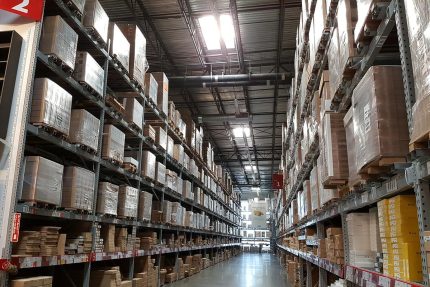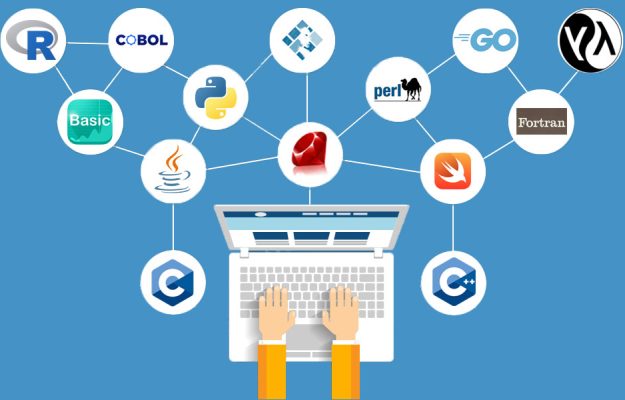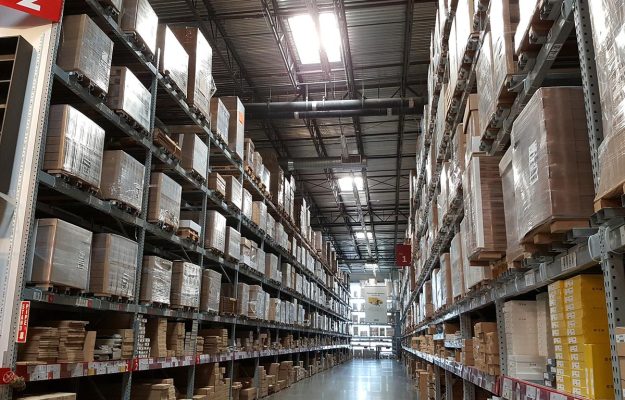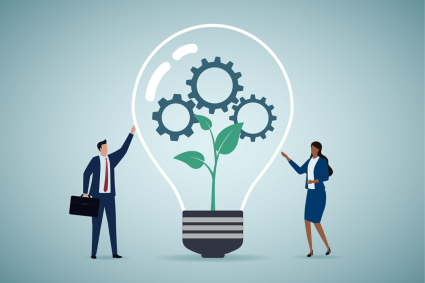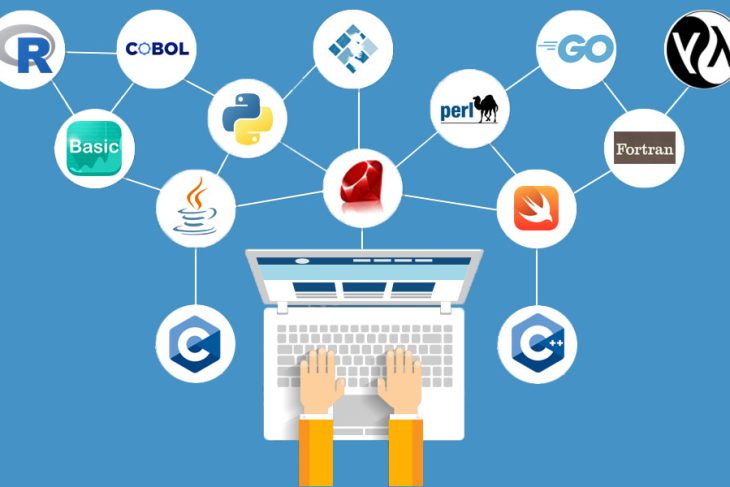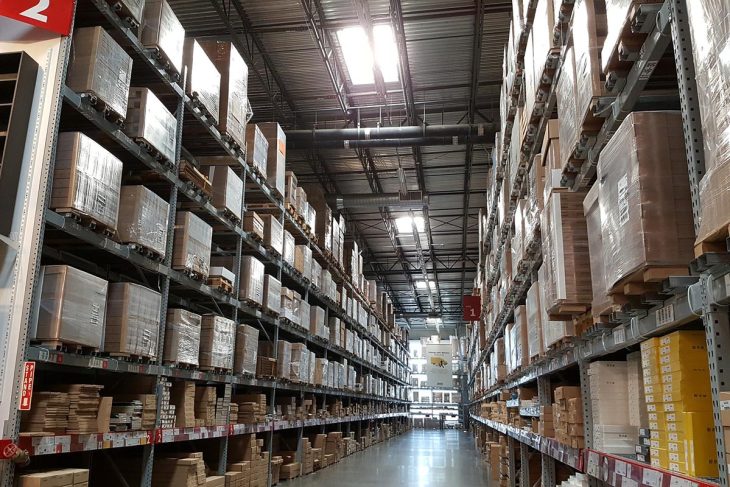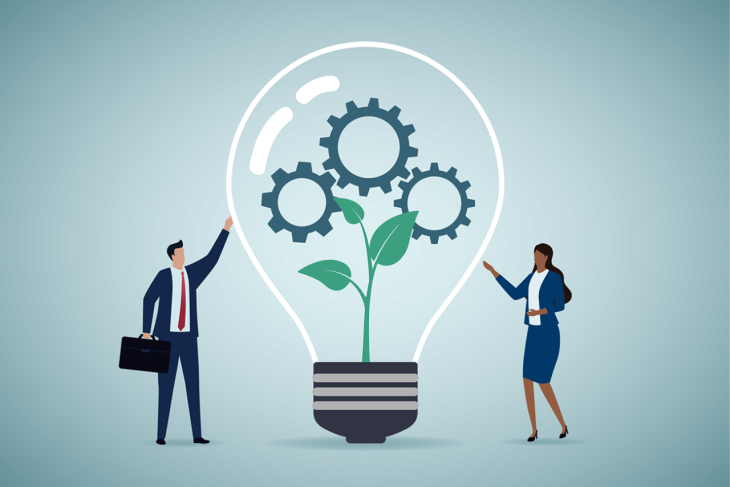

by admin
Achieving Work-Life Balance in a Startup: 5 Strategies for Success
Working at a startup can be an exhilarating experience, but it often comes with long hours, high pressure, and a fast-paced environment. Finding a balance between work and personal life becomes crucial to avoid burnout and maintain overall well-being. In this article, we will explore […]
Startups
by admin
Revolutionizing Travel: Unleashing Personalized Experiences through Generative AI
The travel industry is on the verge of a transformation, thanks to the emergence of generative artificial intelligence (AI). With the power of AI algorithms, personalized travel experiences are set to redefine the way we explore the world. In this article, we delve into the […]
Lifestyle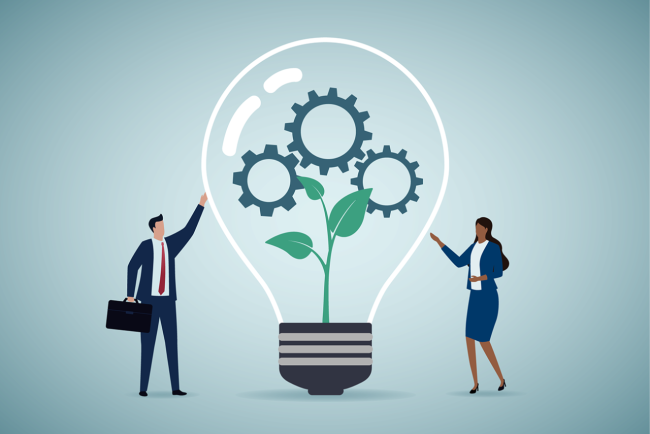
by admin
Embracing the Future: Exploring Boundless Innovations
As an internet information blogger, I often find myself pondering the question: Is innovation dead? Have we reached the pinnacle of the innovation curve? It’s a thought that often lingers in my mind as I navigate through the ever-evolving landscape of technological advancements. However, upon […]
Industrial
by admin
Achieving Work-Life Balance in a Startup: 5 Strategies for Success
Working at a startup can be an exhilarating experience, but it often comes with long hours, high pressure, and a fast-paced environment. Finding a balance between work and personal life becomes crucial to avoid burnout and maintain overall well-being. In this article, we will explore […]
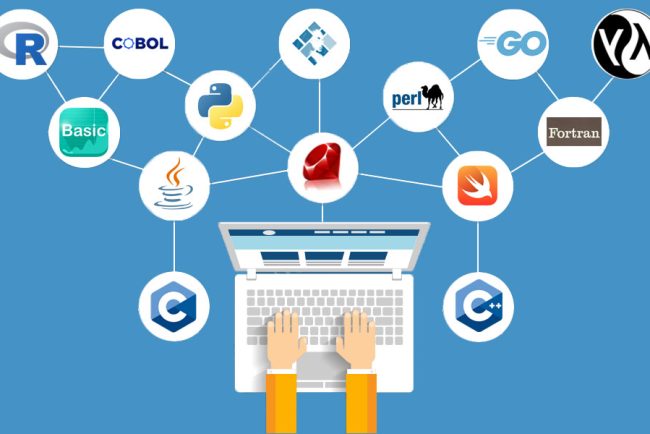
by admin
Exploring the Applications of Natural Language Processing (NLP) in Various Fields
As an Internet information blogger, I am fascinated by the potential of Natural Language Processing (NLP) and its impact on our daily lives. NLP is a technology that allows machines to understand and process human language, combining elements of linguistics, computer science, and artificial intelligence. […]
Industrial
by admin
The Transformation of Travel: Exploring the Impact of Connected Technology
In today’s digital age, connected technology is revolutionizing the way we travel. From planning our trips to navigating unfamiliar destinations, technology has become an integral part of our travel experiences. Let’s delve into how connected tech is changing the landscape of travel and enhancing our […]
Lifestyle
by admin
Exploring the Applications of Natural Language Processing (NLP) in Various Fields
As an Internet information blogger, I am fascinated by the potential of Natural Language Processing (NLP) and its impact on our daily lives. NLP is a technology that allows machines to understand and process human language, combining elements of linguistics, computer science, and artificial intelligence. […]
Industrial
by admin
The Transformation of Travel: Exploring the Impact of Connected Technology
In today’s digital age, connected technology is revolutionizing the way we travel. From planning our trips to navigating unfamiliar destinations, technology has become an integral part of our travel experiences. Let’s delve into how connected tech is changing the landscape of travel and enhancing our […]
Lifestyle
by admin
Building a Future-Ready Warehouse: Nurturing Connectivity and Automation
The concept of the warehouse of tomorrow represents a visionary approach to warehousing and distribution. It envisions warehouses designed with connectivity and automation at their core, promising enhanced efficiency and productivity in storage and fulfillment processes. To achieve this, companies need to focus on modernization […]
Industrial
by admin
Achieving Work-Life Balance in a Startup: 5 Strategies for Success
Working at a startup can be an exhilarating experience, but it often comes with long hours, high pressure, and a fast-paced environment. Finding a balance between work and personal life becomes crucial to avoid burnout and maintain overall well-being. In this article, we will explore […]
Startups
Essential Lessons for e-Commerce Entrepreneurs: Avoiding Costly Mistakes
by admin
Launching an e-commerce business can be an exciting and potentially lucrative venture. However, navigating the competitive landscape and achieving success in the online marketplace requires careful planning and avoiding common pitfalls. In this article, we will discuss seven costly mistakes that e-commerce entrepreneurs must avoid […]
Startups
Launching an e-commerce business can be an exciting and potentially lucrative venture. However, navigating the competitive landscape and achieving success in the online marketplace requires careful planning and avoiding common pitfalls. In this article, we will discuss seven costly mistakes that e-commerce entrepreneurs must avoid to maximize their chances of success and build a thriving online business.
- Insufficient Market Research: Failing to conduct thorough market research is a common mistake that can lead to poor product selection and targeting. Entrepreneurs must understand their target audience, identify market trends, and evaluate competitors’ strategies. By gaining insights into customer needs and preferences, entrepreneurs can make informed decisions about product offerings, pricing, and marketing strategies, setting the foundation for success.
- Neglecting a Solid Business Plan: A comprehensive business plan is essential for e-commerce entrepreneurs. It outlines the company’s goals, target market, competitive landscape, and financial projections. Neglecting a business plan can lead to a lack of direction and strategic focus, making it challenging to attract investors, secure funding, or make informed business decisions. A well-crafted plan serves as a roadmap for success and helps entrepreneurs stay on track toward their objectives.
- Poor Website Design and User Experience: In the digital realm, a company’s website serves as its virtual storefront. A poorly designed website with a confusing user experience can deter potential customers and harm the brand’s reputation. Entrepreneurs must invest in professional website design, ensuring it is visually appealing, easy to navigate, and optimized for mobile devices. A seamless and intuitive user experience encourages engagement, boosts conversion rates, and enhances customer satisfaction.
- Inadequate Marketing and Promotion: Without effective marketing and promotion, even the best e-commerce products can go unnoticed. Many entrepreneurs make the mistake of underestimating the importance of marketing efforts or relying solely on organic traffic. A robust marketing strategy, including search engine optimization (SEO), social media marketing, content marketing, and paid advertising, is essential for attracting customers, driving traffic to the website, and building brand awareness.
- Poor Inventory Management: Inventory management is a critical aspect of e-commerce operations. Inadequate inventory management can lead to overstocking, resulting in high carrying costs, or understocking, causing missed sales opportunities. Entrepreneurs must implement inventory management systems that track stock levels, analyze demand patterns, and optimize inventory replenishment to ensure efficient operations, minimize costs, and meet customer demand.
- Ignoring Customer Feedback and Support: Customer satisfaction is paramount in e-commerce. Ignoring customer feedback or providing inadequate customer support can damage the brand’s reputation and lead to a loss of trust and repeat business. Entrepreneurs must actively listen to customer feedback, address concerns promptly, and provide excellent customer support through various channels. Building strong customer relationships and incorporating customer feedback into business decisions can lead to long-term success.
- Neglecting Data Analysis and Insights: Data is a valuable asset in e-commerce. Failing to leverage data analysis tools and metrics can prevent entrepreneurs from making informed decisions and optimizing business performance. By analyzing data on customer behavior, website traffic, conversion rates, and sales patterns, entrepreneurs can identify areas for improvement, implement data-driven strategies, and make informed decisions to drive growth and profitability.
Conclusion: Avoiding costly mistakes is crucial for e-commerce entrepreneurs looking to succeed in the competitive online marketplace. By conducting market research, developing a solid business plan, focusing on website design and user experience, implementing effective marketing strategies, managing inventory efficiently, prioritizing customer feedback and support, and leveraging data analysis, entrepreneurs can position themselves for long-term success. Learning from these essential lessons and avoiding common pitfalls can set the stage for building a thriving and profitable e-commerce business.

by admin
Unlocking the Advantages of Standing Desks in the Workplace
In recent years, standing desks have gained popularity as a healthier alternative to traditional seated workstations. Many office workers are embracing this ergonomic solution, recognizing the numerous benefits it brings to their well-being and productivity. This article explores the advantages of standing desks for office […]
Lifestyle
In recent years, standing desks have gained popularity as a healthier alternative to traditional seated workstations. Many office workers are embracing this ergonomic solution, recognizing the numerous benefits it brings to their well-being and productivity. This article explores the advantages of standing desks for office workers and sheds light on the positive impact they can have on daily work routines.
Improved Posture and Reduced Back Pain:
One of the primary benefits of standing desks is their positive impact on posture. Sitting for prolonged periods can lead to poor posture, causing back, neck, and shoulder pain. Standing while working promotes a more upright posture, engaging core muscles and reducing strain on the spine. By incorporating standing into their work routine, office workers can alleviate back pain and improve overall spinal alignment.
Increased Energy and Focus:
Standing desks have been shown to boost energy levels and enhance focus throughout the workday. Remaining sedentary for extended periods often leads to feelings of lethargy and decreased alertness. Alternating between sitting and standing positions stimulates blood flow, increasing oxygen and nutrient delivery to the brain. This improved circulation results in higher energy levels, improved concentration, and better cognitive function.
Calorie Burn and Weight Management:
Standing desks offer an effective way to burn calories and promote weight management. While standing may not replace intense physical exercise, it does increase energy expenditure compared to sitting. Studies have shown that standing for several hours a day can lead to a higher calorie burn rate, contributing to weight loss or weight maintenance goals. Incorporating standing into the work routine can be a simple yet valuable step towards a healthier lifestyle.
Enhanced Productivity and Creativity:
Standing desks can have a positive impact on productivity and creativity in the workplace. When individuals are physically active and engaged, they tend to experience higher levels of productivity. Standing encourages movement, reducing the likelihood of feeling stagnant or sluggish. Additionally, the increased blood flow and oxygenation to the brain can enhance cognitive function, leading to improved problem-solving skills, idea generation, and overall creativity.
Reduced Risk of Chronic Diseases:
Prolonged sitting has been associated with an increased risk of various chronic diseases, including obesity, heart disease, and type 2 diabetes. By incorporating standing into the work routine, office workers can reduce their sedentary time and mitigate these risks. Standing desks promote a more active lifestyle, helping individuals maintain healthier blood sugar levels, lower cholesterol, and improve cardiovascular health.
Promoting Work-Life Balance:
Standing desks also contribute to a healthier work-life balance by allowing individuals to incorporate movement into their daily routines. Standing while working provides flexibility and freedom of movement, making it easier to address personal needs or engage in brief physical activities throughout the day. This integration of movement into the work environment supports a holistic approach to well-being and encourages a more balanced lifestyle.
Conclusion:
The adoption of standing desks in the workplace offers numerous benefits for office workers. From improved posture and reduced back pain to increased energy, productivity, and creativity, standing desks have the potential to transform the work environment. By promoting healthier work habits, standing desks contribute to the overall well-being and satisfaction of employees. Embracing this ergonomic solution can lead to a more active, productive, and balanced work life.
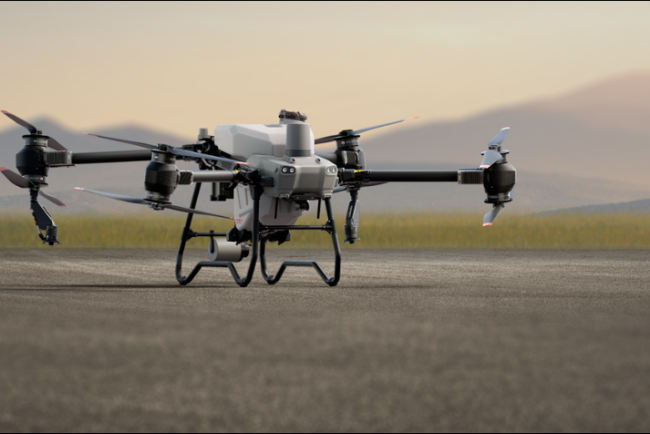
by admin
The Astonishing Capabilities of Future Drones
On October 11, 2019, the surveillance capabilities of four drones designed by Anna University in India were showcased when they provided high-precision monitoring along a 50 km route traveled by Chinese President Xi Jinping’s convoy. These drones amazed us with their ability to achieve a […]
Industrial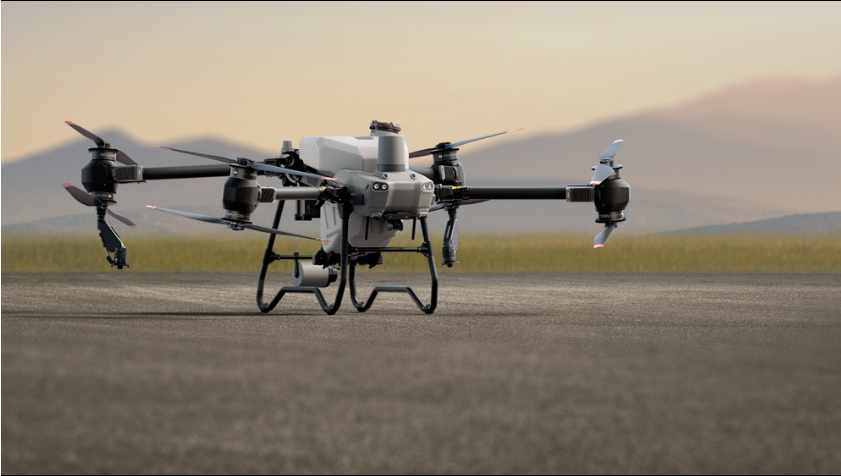
On October 11, 2019, the surveillance capabilities of four drones designed by Anna University in India were showcased when they provided high-precision monitoring along a 50 km route traveled by Chinese President Xi Jinping’s convoy. These drones amazed us with their ability to achieve a resolution of 3 cm at an altitude of 100 m.
However, the drone attack in Saudi Arabia in September 2019, which resulted in a significant reduction in global oil supply, raised a challenging question. Will drones continue to serve as beneficial tools for humanity, or will they become weapons of mass destruction and terrorism in the future?
Drones are influenced by three factors: the need for advanced technology, substantial investment, and rapid adoption. These three elements can converge to create a scenario where both opportunities for prosperity and risks of destruction coexist in the realm of future drones. Check out our review of the best drones.
Introduction to Drones A drone, also known as an unmanned aerial vehicle (UAV), is capable of autonomous flight controlled by a dedicated remote unit. It can perform specific aerial operations guided by computer programs, with flight mode controls assisted by tracking devices like GPS.
The origin of drones can be traced back to the realization of the government and military’s need for intelligent warfare devices since the 1960s. Drones were extensively used for surveillance purposes by the US Army during the Vietnam War, and later by the Israeli military during the 1982 Lebanon War.
However, with technological advancements, drones have been customized for various commercial applications. They have proved beneficial in accessing challenging situations, locating missing persons, creating 3D maps, surveying landscapes, wildlife conservation, pipeline inspection, traffic monitoring, weather forecasting, firefighting, agriculture, photography, video production, and academic projects.
Even delivery services, particularly during pandemic situations, can benefit from drone technology, providing comfort and convenience to all.
The cost of drones varies depending on their size and functionality. Miniature drones that fit in the palm of your hand can cost as little as $100, while military-grade drones that fit in a backpack can cost tens of millions of dollars. One notable example is the MQ-4 Global Hawk, which is 47.6 feet long, exceeding the width of a Boeing 737 airliner.
The DJI Phantom 3, renowned for professional cinematography, was one of the most popular drones in the market. It introduced advanced technologies that have been inherited by the latest models such as the Mavic Air, Phantom 4 Pro, Inspire 2, Walkera Voyager 5, and more.
How Drones Work Drones are constructed using lightweight composite materials to reduce weight and enable high-altitude coverage. The propulsion system is achieved through a compact, high-torque multi-propeller arrangement, which allows the drone to operate independently and provides fail-safe features. Even if one motor fails, the drone can continue flying due to the support provided by the remaining propellers working in unison.
These propellers are controlled by remote ground control systems (GSC) using radio waves, including Wi-Fi. Many drones are equipped with removable batteries to prolong flight time, which can be further extended by using powerful batteries.
Gyroscopes and sensors relay rotation rates and other parameters to computers, which employ algorithms to adjust the drone’s position. This ensures stable hovering and enables the drone to move forward, backward, or vertically.
Drones incorporate navigational systems, such as GPS, located in the nose of the aircraft, which communicate precise location information. Additionally, an onboard altimeter can provide altitude vectors, allowing the drone to maintain a specific altitude when commanded by the operator.
Evolving Technologies The latest high-tech drones are surpassing their predecessors in various aspects.
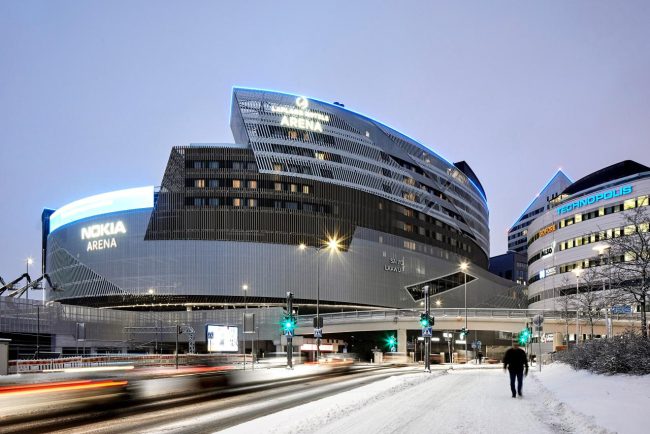
by admin
Finland’s Upcoming Launch of Self-Driving Shuttle Service Signals Technological Progress
Finland is making significant strides in the realm of autonomous transportation as it prepares to introduce a self-driving shuttle service this fall. The launch of this innovative project showcases Finland’s commitment to embracing advanced technologies and highlights the potential benefits of self-driving vehicles in urban […]
Smart Cities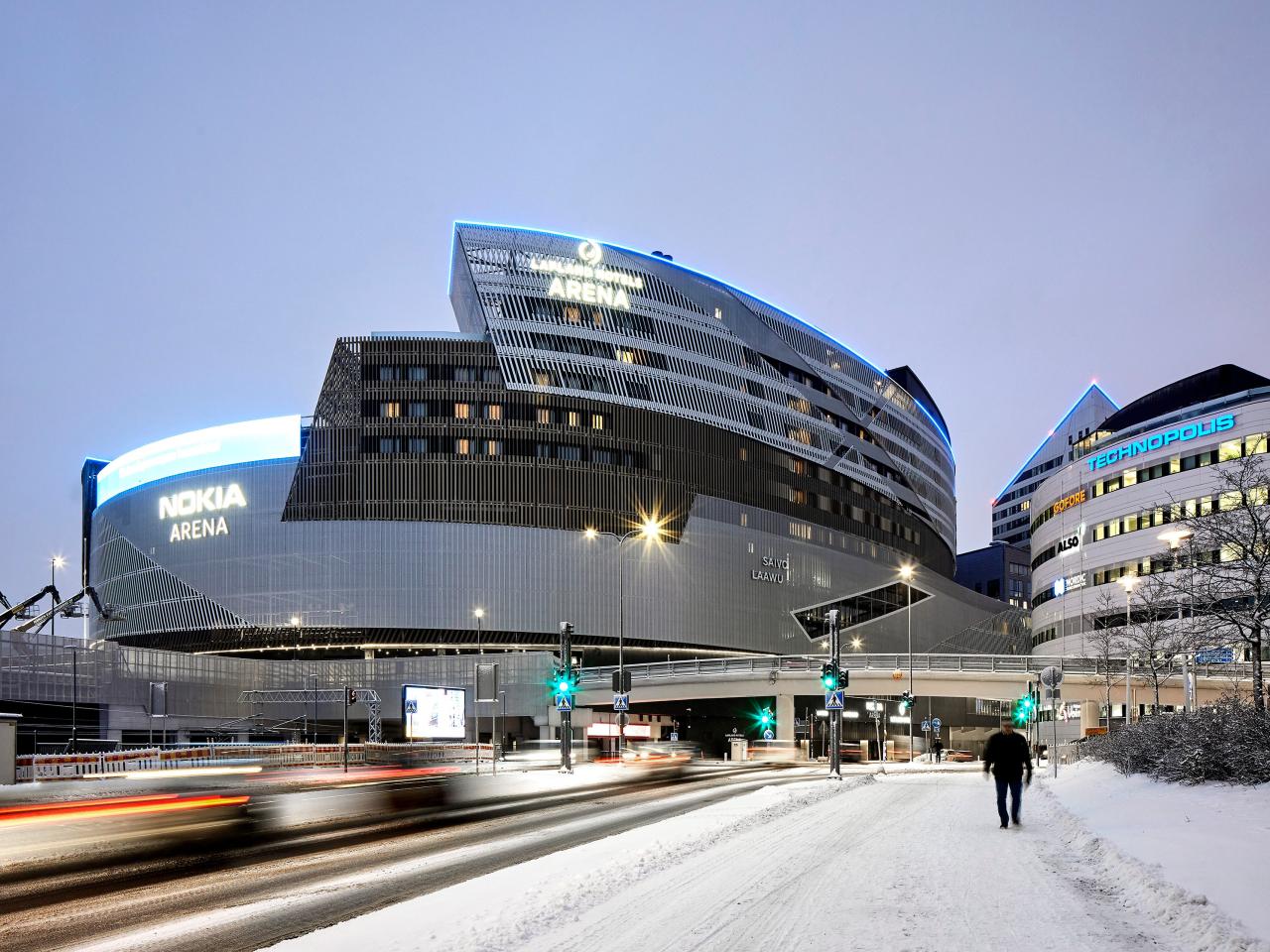
Finland is making significant strides in the realm of autonomous transportation as it prepares to introduce a self-driving shuttle service this fall. The launch of this innovative project showcases Finland’s commitment to embracing advanced technologies and highlights the potential benefits of self-driving vehicles in urban settings. In this article, we explore Finland’s initiative and discuss the implications of this new development.
The Self-Driving Shuttle Service:
Finland’s self-driving shuttle service is set to debut in selected urban areas later this year. The autonomous shuttles, equipped with cutting-edge technology and sensors, will provide convenient and eco-friendly transportation options for residents and visitors alike. The service aims to enhance mobility, reduce congestion, and contribute to a more sustainable transportation system.
Benefits of Self-Driving Shuttles:
- Improved Safety: Self-driving shuttles utilize advanced algorithms and sensors to navigate their surroundings, minimizing the risk of human error and potential accidents. By eliminating human factors such as distracted driving or fatigue, these autonomous vehicles have the potential to significantly improve road safety.
- Enhanced Efficiency: Autonomous shuttles are designed to optimize route planning and traffic flow, leading to more efficient transportation systems. With their ability to communicate with traffic infrastructure and other vehicles, self-driving shuttles can adapt their routes in real-time, reducing congestion and travel time.
- Accessibility and Inclusivity: Self-driving shuttles can enhance accessibility for individuals with limited mobility or disabilities. With features such as wheelchair ramps and user-friendly interfaces, these vehicles offer a convenient and inclusive transportation option for all members of the community.
- Environmental Sustainability: The introduction of self-driving shuttles aligns with Finland’s commitment to environmental sustainability. These vehicles are typically electric-powered, emitting fewer greenhouse gases compared to traditional combustion engines. By promoting the use of electric and autonomous vehicles, Finland aims to reduce carbon emissions and combat climate change.
Implications for the Future:
Finland’s launch of the self-driving shuttle service represents a significant step toward the widespread adoption of autonomous transportation. The successful implementation and operation of this project can serve as a blueprint for other cities and countries looking to integrate self-driving vehicles into their transportation systems. It will also provide valuable insights into user acceptance, regulatory frameworks, and infrastructure requirements for autonomous mobility.
As technology continues to evolve, the introduction of self-driving shuttles in Finland demonstrates the country’s readiness to embrace innovation and leverage its potential benefits. The experience gained from this initiative will pave the way for future advancements in autonomous transportation and contribute to the ongoing development of smart cities worldwide.
Conclusion:
Finland’s upcoming launch of a self-driving shuttle service signifies the country’s commitment to technological progress and its vision for a more efficient, accessible, and sustainable transportation system. By harnessing the benefits of autonomous vehicles, Finland aims to improve road safety, enhance mobility options, and reduce environmental impact. As the project unfolds, the world will closely observe the outcomes, drawing valuable lessons and insights that will shape the future of autonomous transportation.

by admin
Decoding the Strategy to Construct a Smart City
The concept of smart cities has gained significant traction in recent years, as governments and urban planners strive to create innovative and sustainable urban environments. Building a smart city requires careful planning, collaboration, and the integration of cutting-edge technologies. In this article, we will delve […]
Smart Cities
The concept of smart cities has gained significant traction in recent years, as governments and urban planners strive to create innovative and sustainable urban environments. Building a smart city requires careful planning, collaboration, and the integration of cutting-edge technologies. In this article, we will delve into the blueprint for constructing a smart city and explore the key elements involved in its development.
- Robust Infrastructure and Connectivity:
At the core of a smart city lies a robust infrastructure and seamless connectivity. This entails the establishment of high-speed broadband networks, IoT devices, and sensors that form the foundation for data collection and communication. Reliable connectivity enables the interconnection of various systems, facilitating real-time data analysis and informed decision-making.
- Data Collection and Analysis:
Data plays a pivotal role in driving efficiency and enhancing services within smart cities. By implementing sensors and IoT devices across the city, vast amounts of data can be collected on various aspects such as transportation, energy consumption, and waste management. Leveraging advanced analytics and machine learning techniques, city authorities can extract valuable insights from this data, enabling them to make data-driven decisions and optimize resource allocation.
- Sustainable Energy Management:
A sustainable approach to energy management is a key pillar of any smart city. Incorporating renewable energy sources, such as solar and wind power, can help reduce carbon emissions and enhance energy efficiency. Smart grids enable intelligent monitoring and control of energy distribution, optimizing energy consumption and reducing wastage. Additionally, implementing energy-saving measures in buildings, such as smart lighting and automated systems, contributes to a greener and more sustainable cityscape.
- Integrated Transportation Systems:
Efficient and sustainable transportation systems are crucial for a smart city. This involves integrating various modes of transportation, including public transportation, shared mobility services, and cycling infrastructure. Smart traffic management systems utilize real-time data to optimize traffic flow, reduce congestion, and enhance safety. Furthermore, intelligent parking systems enable drivers to locate available parking spaces, reducing traffic congestion and carbon emissions.
- Citizen Engagement and Participation:
A successful smart city is built on the active participation and engagement of its citizens. Providing platforms for citizen feedback, participation in decision-making processes, and access to open data fosters a sense of ownership and community involvement. Smart city initiatives should focus on creating digital platforms and applications that enable citizens to contribute to urban planning, report issues, and access city services conveniently.
Conclusion:
Constructing a smart city requires careful consideration of multiple factors, including robust infrastructure, data-driven decision-making, sustainable energy management, integrated transportation systems, and citizen engagement. By embracing these elements, cities can create environments that are efficient, sustainable, and responsive to the needs of their residents. The blueprint for building a smart city serves as a guide to help urban planners and policymakers navigate the complexities and challenges associated with this transformative endeavor.

by admin
The Impact of Self-Driving Cars on Urban Planning: Exploring the Future
Self-driving cars have been a hot topic in recent years, promising to revolutionize transportation as we know it. As this technology continues to evolve, it’s important to consider the potential impact it will have on urban planning. In this article, we delve into how self-driving […]
Smart Cities
Self-driving cars have been a hot topic in recent years, promising to revolutionize transportation as we know it. As this technology continues to evolve, it’s important to consider the potential impact it will have on urban planning. In this article, we delve into how self-driving cars could shape the future of our cities and the key considerations for urban planners.
- Redefining Transportation Infrastructure:
Self-driving cars have the potential to reshape our cities’ transportation infrastructure. With autonomous vehicles, there may be a reduced need for parking spaces as vehicles can be in constant use, drop off passengers, and move on to the next ride. This can lead to the repurposing of parking lots and garages into green spaces, commercial areas, or housing developments. Urban planners will need to reconsider the allocation of space within cities to accommodate this shift in transportation demands.
- Improved Traffic Flow and Efficiency:
One of the major advantages of self-driving cars is their ability to communicate and coordinate with each other, leading to improved traffic flow and reduced congestion. With fewer accidents and precise control over speed and spacing, self-driving cars can optimize traffic patterns and minimize delays. This can have a significant impact on urban planning, as it may influence road design, traffic signal systems, and the need for certain infrastructure elements such as dedicated lanes or parking structures.
- Reimagining City Centers and Commuting:
The advent of self-driving cars could transform city centers and commuting patterns. As the need for parking diminishes, city centers may become more pedestrian-friendly, with reduced car traffic and more space for green areas and public amenities. Additionally, self-driving cars may enable longer commuting distances as passengers can engage in other activities during the journey. This may lead to a shift in residential preferences, as people might be more willing to live farther from city centers, influencing housing development and urban expansion.
- Enhanced Mobility for All:
Self-driving cars have the potential to enhance mobility for various segments of the population, including the elderly, disabled individuals, and those without access to private transportation. By providing convenient and accessible transportation options, self-driving cars can improve overall mobility and reduce transportation barriers. Urban planners need to consider inclusivity in their designs, ensuring that self-driving technology benefits everyone and addresses existing disparities in transportation access.
- Environmental Considerations:
While self-driving cars have the potential to improve traffic efficiency, reducing congestion and emissions, their impact on the environment is not solely positive. Increased convenience and affordability of transportation may lead to a rise in vehicle miles traveled, potentially offsetting some of the environmental benefits. Urban planners must balance the integration of self-driving cars with sustainable urban development strategies, such as promoting public transportation, encouraging active modes of transportation, and integrating renewable energy solutions.
Conclusion:
The advent of self-driving cars presents both exciting opportunities and challenges for urban planning. As this technology continues to advance, it’s crucial for urban planners to stay informed and adapt their strategies to harness the potential benefits while mitigating any negative impacts. By redefining transportation infrastructure, optimizing traffic flow, reimagining city centers, prioritizing inclusivity, and considering environmental implications, cities can effectively integrate self-driving cars into their long-term urban planning, shaping a future that is efficient, sustainable, and accessible to all.

by admin
Exploring the Diverse Metaverse Experiences Enabled by the Extended Reality Spectrum
The concept of the metaverse has captured the imagination of people worldwide, promising immersive virtual experiences that transcend traditional boundaries. Within the metaverse, extended reality (XR) technologies play a pivotal role in delivering a wide range of experiences, from virtual reality (VR) and augmented reality […]
Industrial
The concept of the metaverse has captured the imagination of people worldwide, promising immersive virtual experiences that transcend traditional boundaries. Within the metaverse, extended reality (XR) technologies play a pivotal role in delivering a wide range of experiences, from virtual reality (VR) and augmented reality (AR) to mixed reality (MR). Each point on the XR spectrum offers unique opportunities for users to engage with virtual worlds and interact with digital content. In this article, we will delve into the diverse metaverse experiences made possible by the extended reality spectrum.
Virtual Reality (VR): At one end of the XR spectrum lies virtual reality, which completely immerses users in a computer-generated environment. VR headsets and controllers transport users to entirely virtual worlds, disconnecting them from the physical surroundings. Within the metaverse, VR experiences enable users to explore imaginary landscapes, interact with lifelike avatars, and engage in virtual social interactions. From gaming and entertainment to training simulations and virtual travel, VR offers a fully immersive and visually stimulating experience that transcends the limitations of the physical world.
Augmented Reality (AR): Moving along the XR spectrum, we encounter augmented reality, where virtual elements are superimposed onto the real world. AR experiences blend digital content with the user’s physical environment, enhancing their perception and interaction with the real world. Through smartphones, tablets, or AR glasses, users can see and interact with virtual objects and information overlaid onto their immediate surroundings. In the metaverse, AR enables users to engage with virtual characters, access contextual information, and enjoy interactive storytelling experiences that merge the real and virtual realms.
Mixed Reality (MR): The intersection of the real and virtual worlds is where mixed reality resides. MR experiences seamlessly integrate virtual objects into the user’s physical environment while maintaining spatial awareness and interaction with the real world. Through headsets like Microsoft HoloLens or Magic Leap, users can interact with virtual objects as if they were physically present in their surroundings. In the metaverse, MR offers a range of possibilities, such as architectural visualizations, interactive educational experiences, and immersive workplace collaborations that combine the best of virtual and real-world elements.
The Diversity of Metaverse Experiences: The extended reality spectrum opens up a diverse array of metaverse experiences that cater to different preferences and use cases. Gaming enthusiasts can dive into fully immersive VR worlds, battling foes and solving puzzles in stunning virtual landscapes. Those seeking to enhance their daily lives can leverage AR applications, such as virtual shopping assistants, real-time language translation, or navigation aids that overlay directions onto the physical environment. MR experiences, on the other hand, offer opportunities for professionals to visualize complex data, manipulate virtual objects, and collaborate remotely, creating new avenues for productivity and innovation.
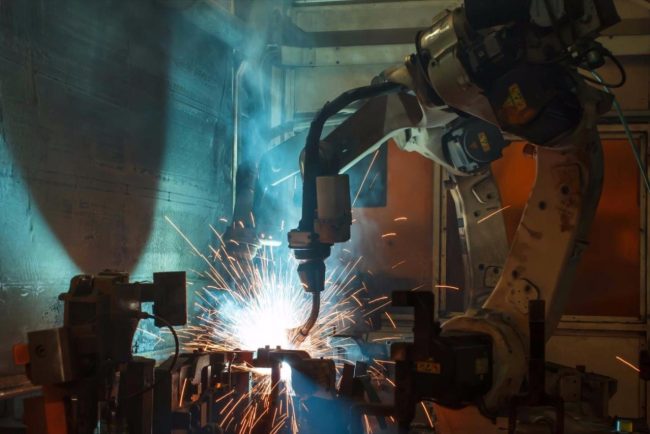
by admin
The Transformative Influence of Artificial Intelligence on Product Manufacturing
Artificial Intelligence (AI) has emerged as a disruptive force across various industries, and its impact on product manufacturing is both significant and transformative. By leveraging AI technologies, manufacturers are experiencing improved operational efficiency, enhanced product quality, and increased innovation. Let’s delve into the profound influence […]
Industrial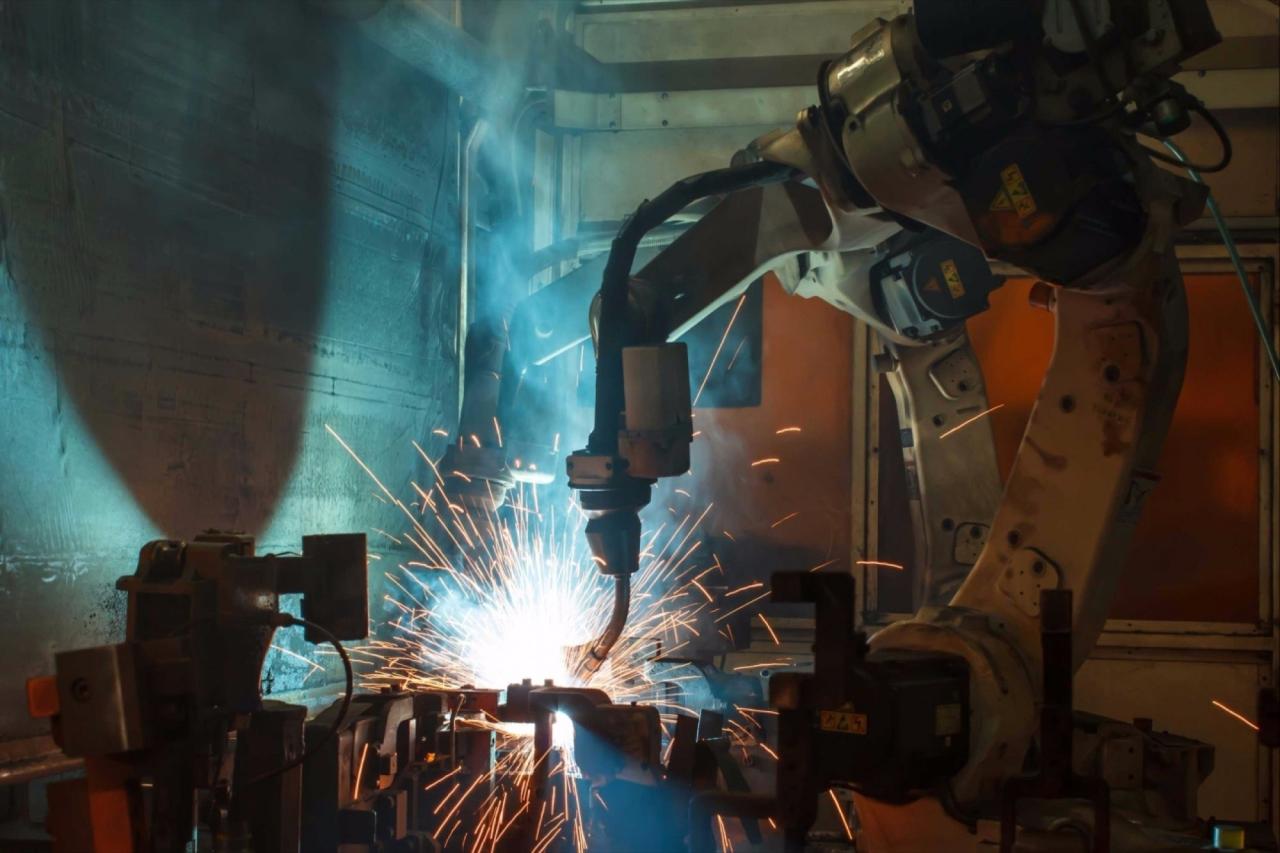
Artificial Intelligence (AI) has emerged as a disruptive force across various industries, and its impact on product manufacturing is both significant and transformative. By leveraging AI technologies, manufacturers are experiencing improved operational efficiency, enhanced product quality, and increased innovation. Let’s delve into the profound influence of AI on product manufacturing and explore its implications for the industry.
One of the key areas where AI is revolutionizing product manufacturing is in the realm of automation. Traditional manufacturing processes often involve repetitive tasks that are time-consuming and prone to human error. AI-powered robotic systems and intelligent automation solutions have the capability to perform these tasks with precision and speed, freeing up human resources to focus on more complex and creative aspects of production. This not only accelerates the manufacturing process but also ensures consistent quality and reduces costs.
AI also plays a vital role in predictive maintenance, a practice aimed at minimizing equipment downtime and optimizing maintenance schedules. By analyzing data from sensors embedded in machinery, AI algorithms can detect patterns and anomalies that indicate potential faults or breakdowns. This enables manufacturers to proactively schedule maintenance activities, preventing unexpected failures and minimizing production disruptions. Ultimately, predictive maintenance powered by AI leads to improved productivity, reduced downtime, and significant cost savings.
Furthermore, AI enables manufacturers to make data-driven decisions at every stage of the product lifecycle. Advanced analytics algorithms can process vast amounts of data collected from various sources, including production processes, supply chains, and customer feedback. By extracting valuable insights from this data, manufacturers can optimize production workflows, identify areas for improvement, and customize products to meet customer demands more effectively. AI-powered data analytics also enable manufacturers to anticipate market trends, forecast demand, and make informed decisions regarding inventory management and production planning.
Quality control is another critical aspect of product manufacturing that benefits from AI integration. AI-powered systems can detect and analyze deviations in product quality by comparing real-time production data with predefined quality standards. This enables manufacturers to identify defects or irregularities early in the production process, minimizing waste and reducing the likelihood of defective products reaching the market. By ensuring consistent quality, AI contributes to higher customer satisfaction and brand reputation.
Innovation is a driving force in product manufacturing, and AI serves as a catalyst for groundbreaking advancements. Through machine learning algorithms, AI systems can analyze vast amounts of data, identify patterns, and generate insights that humans might overlook. This opens up avenues for product innovation, design optimization, and the development of cutting-edge features. Additionally, AI-powered simulations and modeling techniques allow manufacturers to test and iterate product prototypes virtually, reducing time-to-market and minimizing the need for physical iterations.
As AI continues to evolve, its impact on product manufacturing will only grow stronger. However, it is important to acknowledge the challenges associated with its implementation. Data security, ethical considerations, and the need for upskilling the workforce are among the key areas that manufacturers must address to fully leverage the potential of AI.
In conclusion, the integration of AI in product manufacturing is revolutionizing the industry by enhancing automation, enabling predictive maintenance, facilitating data-driven decision-making, improving quality control, and fostering innovation. As manufacturers embrace AI technologies, they are better positioned to adapt to changing market dynamics, meet customer expectations, and drive growth in the digital era.

by admin
Key Considerations When Selecting a Bank for Your Startup
Choosing the right bank is a critical decision for startups, as it can have a significant impact on their financial operations and growth potential. Startups require a banking partner that understands their unique needs, offers tailored solutions, and provides reliable support. In this article, we […]
Startups
Choosing the right bank is a critical decision for startups, as it can have a significant impact on their financial operations and growth potential. Startups require a banking partner that understands their unique needs, offers tailored solutions, and provides reliable support. In this article, we will explore the key factors that entrepreneurs should consider when selecting a bank for their startup, helping them make an informed decision that aligns with their business objectives.
- Understanding Your Startup’s Financial Needs: Before choosing a bank, startups should evaluate their specific financial requirements. Consider factors such as the volume and frequency of transactions, the need for business loans or lines of credit, international banking capabilities, and access to advanced digital tools. Understanding these needs will help in identifying a bank that offers the right mix of services and solutions.
- Banking Fees and Charges: Startup founders should carefully review the fee structures of potential banks. Different banks have varying fee schedules for services like business account maintenance, wire transfers, overdraft protection, and cash handling. It is important to compare these fees and charges to ensure they align with the startup’s financial capabilities and anticipated transaction volumes.
- Technology and Digital Banking Solutions: In today’s digital age, startups require banking partners that offer advanced technology and digital banking solutions. Look for banks that provide user-friendly online and mobile banking platforms, allowing easy access to account information, transaction history, and the ability to initiate payments or transfers conveniently. Additionally, consider the availability of features such as mobile check deposits, automated accounting integration, and real-time transaction notifications.
- Access to Financing: Startups often require access to capital for growth and expansion. When evaluating banks, consider their track record in providing business loans, lines of credit, or other financing options. Look for banks that have experience working with startups and understand their unique financial challenges. Assess their willingness to provide funding and their criteria for loan approval.
- Relationship Management and Customer Service: Establishing a strong relationship with a bank can be invaluable for startups. Look for a bank that assigns a dedicated relationship manager or small business specialist who can provide personalized support and guidance. Evaluate the bank’s reputation for customer service, responsiveness, and accessibility. A proactive and supportive banking relationship can be crucial during critical business moments or when navigating financial challenges.
- Network and Partnerships: Consider the bank’s network and partnerships. Some banks have extensive networks that can connect startups with potential investors, mentors, or industry experts. Look for banks that offer value-added services such as educational workshops, networking events, or access to business resources. A bank that actively supports the startup ecosystem can provide valuable connections and opportunities for growth.
Conclusion: Choosing the right bank is a strategic decision for startups. By considering factors such as financial needs, banking fees, technology solutions, access to financing, relationship management, and network, entrepreneurs can identify a banking partner that aligns with their business goals. It is advisable to conduct thorough research, compare offerings from different banks, and even seek recommendations from other entrepreneurs or industry professionals. Ultimately, a strong banking relationship can contribute to the financial stability and success of a startup.

by admin
Mitigating Vehicle Ramming Attacks: The Role of Technology
In recent years, the world has witnessed a rise in terrorist attacks involving vehicles being used as deadly weapons. These vehicle ramming attacks pose a significant threat to public safety and security. As technology continues to advance, there is a growing question: Can technology play […]
Smart Cities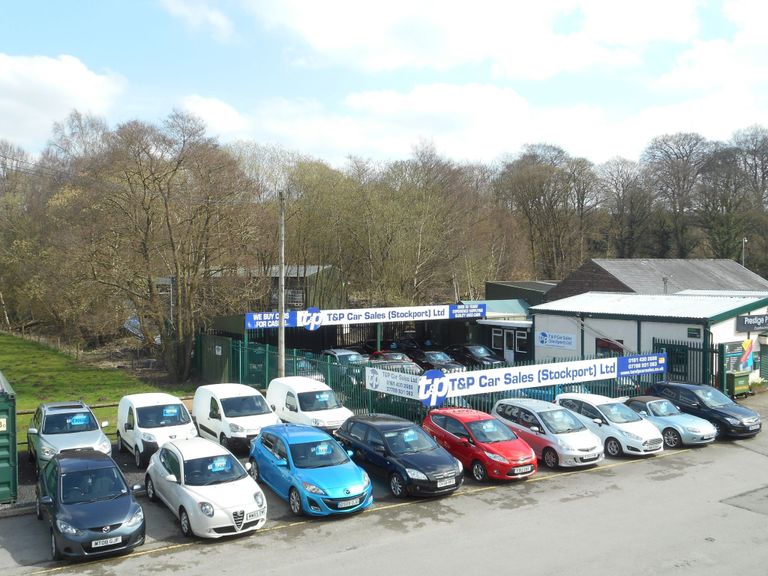
In recent years, the world has witnessed a rise in terrorist attacks involving vehicles being used as deadly weapons. These vehicle ramming attacks pose a significant threat to public safety and security. As technology continues to advance, there is a growing question: Can technology play a role in preventing and stopping such attacks? This article explores the potential of technology in mitigating vehicle ramming attacks and its implications for public safety.
Understanding Vehicle Ramming Attacks:
Vehicle ramming attacks involve individuals intentionally using vehicles as weapons to target and harm pedestrians or cause destruction in public spaces. These attacks can occur suddenly and without warning, making them difficult to prevent using traditional security measures alone. As a result, there is a need to explore innovative technological solutions to enhance security and minimize the impact of such incidents.
Technological Solutions for Prevention:
- Advanced Surveillance Systems: Technological advancements in surveillance systems can play a crucial role in identifying suspicious behavior and detecting potential threats. High-definition cameras, integrated with artificial intelligence algorithms, can analyze vehicle movements, identify abnormal behaviors, and alert security personnel in real-time. These systems can be deployed in public areas, transportation hubs, and critical infrastructure to enhance situational awareness and response capabilities.
- Intelligent Traffic Management Systems: Intelligent traffic management systems can help prevent vehicle ramming attacks by monitoring and controlling the flow of vehicles in high-risk areas. These systems utilize sensors, cameras, and data analytics to detect unusual patterns, unauthorized vehicles, or abnormal driving behaviors. They can automatically trigger alerts, block access to restricted areas, and notify authorities of potential threats.
- Vehicle Access Control: Implementing advanced access control measures can restrict unauthorized vehicles from entering sensitive areas. Technologies such as license plate recognition systems, biometric identification, and smart barriers can help verify and authenticate vehicles, allowing only authorized ones to access specific locations. These measures can be particularly effective in protecting high-security sites, government buildings, and critical infrastructure.
- Anti-Vehicle Barrier Systems: Deploying robust physical barriers can act as a deterrent and provide protection against vehicle ramming attacks. Bollards, crash-rated barriers, and reinforced fences can be strategically placed to prevent unauthorized vehicle entry and mitigate the impact of a potential attack. These barriers can be manually operated or integrated with automated systems that respond to specific threat scenarios.
Challenges and Considerations:
While technology offers promising solutions, it is essential to acknowledge certain challenges and considerations. Privacy concerns regarding the use of surveillance systems and data collection need to be addressed to ensure a balance between security and individual rights. Additionally, the effectiveness of technological solutions relies on proper implementation, regular maintenance, and skilled personnel to monitor and respond to alerts effectively.
Conclusion:
Technology can play a significant role in preventing and mitigating vehicle ramming attacks by enhancing surveillance capabilities, implementing intelligent traffic management systems, strengthening access control measures, and deploying physical barriers. However, it is crucial to recognize that technology should not be viewed as a standalone solution but as part of a comprehensive security strategy that combines technology, human vigilance, and proactive measures. By leveraging technological advancements, we can strive to create safer environments and protect public spaces from the threat of vehicle ramming attacks.



